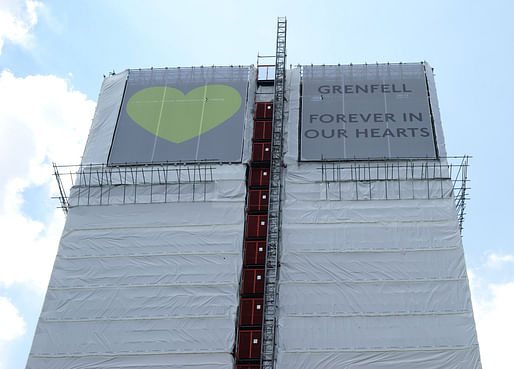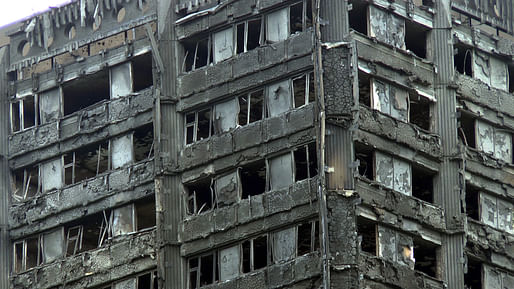

Over seven years after fire engulfed London’s Grenfell Tower killing 72 people, a public inquiry into the disaster has released its final report. The Grenfell Inquiry’s report has uncovered a chain of failures across government and the private sector, including an architecture firm, beginning a full 25 years before the 2017 fire. The report ultimately found that all 72 deaths were avoidable.
The 1,700-page report, which brings to a close the six-year public inquiry, said that cladding products were “by far the largest contributor” to the fire and that the product manufacturers had engaged in “systemic dishonesty” using “deliberate and sustained strategies” to make their products safe.
U.S. manufacturer Arconic, whose cladding panels were used on the tower’s exterior, were found to have “deliberately concealed” safety risks. While fire tests Arconic commissioned showed the cladding performed poorly, such information was not given to a key British certification company.
An additional company, Celotex, which produced the insulation used inside the panels, was found to have made “false and misleading claims” about its products being suitable for the project, while fellow insulation manufacturer Kingspan was found to have misled the market by not revealing the limitations of its products.

Beyond manufacturers, the inquiry found that the companies involved in delivering the refurbishment of the building one year before the fire engaged in a “merry-go-round of buck-passing” when it came to establishing who was responsible for safety standards. According to the report, architects Studio E, principal contractor Rydon, and cladding sub-contractor Harley Facades all “took a casual approach to contractural relations” and “did not properly understand the nature and scope of the obligations they had undertaken, or, if they did, paid scant attention to them.”
The inquiry noted that architects Studio E “bears a very significant degree of responsibility for the disaster” for failing to recognize the cladding used in the refurbishment was combustible.
Beyond the firms directly involved in the tower’s refurbishment, the report said that warnings about cladding fires stretching back as far as 1992 were not addressed by successive governments and that the council body that managed the building showed a “persistent indifference” to fire safety.
Releasing the report, the chair of the inquiry also noted that the council body manipulated the process of appointing an architect to carry out the refurbishment so that it could appoint Studio E, despite the firm having “no experience” installing cladding on high-rise buildings.

In addition to its findings, the report contains 58 recommendations, which the government has stated it will respond to within six months. The inquiry chair has called for a “fundamental change” in the UK construction industry, including appointing a dedicated construction regulator to oversee all aspects of the construction industry, a reorganization of fire safety responsibility in government departments, and making fire safety strategies mandatory for higher-risk buildings.
While the inquiry includes damning findings about several companies, it has no power to press charges. The Crown Prosecution Service, which brings cases on behalf of the state, has confirmed it will not be in a position to decide whether to charge any parties with a criminal offense until late 2026.
“The Grenfell Tower Inquiry Phase 2 Report recommends that ARB review the changes we have already made to the training and education of architects, to ensure they are sufficient in the light of the Inquiry’s findings,” the UK’s Architects Registration Board said in a statement after the report’s release. “We will do this and will publish our assessment.”
ARB adds: “The report also finds that the architects appointed on the Grenfell Tower refurbishment 'fell significantly below the standard reasonably to be expected.' The Inquiry has expressed concerns that this may be widespread within the profession. We will consider those findings in further detail, and take into account the involvement of other authorities with prosecuting powers before deciding what further action may be required.”
No Comments
Block this user
Are you sure you want to block this user and hide all related comments throughout the site?
Archinect
This is your first comment on Archinect. Your comment will be visible once approved.